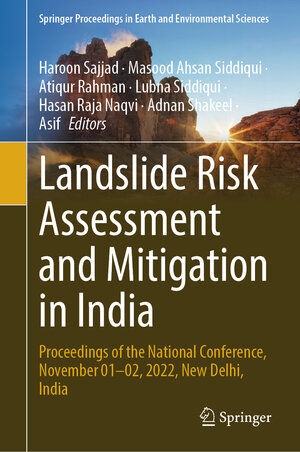
Landslide Risk Assessment and Mitigation in India
Proceedings of the National Conference, November 01-02, 2022, New Delhi, India
herausgegeben von Haroon Sajjad und weiterenThis book focuses on landslide hazard mapping, identification of site-specific drivers of landslide occurrence, and assessment of landslide susceptibility, vulnerability, risk and mitigation using advanced techniques and approaches. The book encompasses the use of geospatial technologies, artificial intelligence, machine learning algorithms, and advanced statistical models to explore multi-dimensionality of landslide hazard. The book is a synthesis of research papers presented at the National Conference on Landslide Risk Assessment and Mitigation in India, organized by the Department of Geography, Jamia Millia Islamia, New Delhi, India, 01–02 November 2022. The book is organized into four parts made up of 21 chapters. Part I deals with landslide hazard mapping. Part II covers landslide susceptibility mapping and assessment. Part III evaluates landslide risk. Finally, Part IV presents multi-disciplinary approach and holistic mechanism to devise landslide mitigation strategies. The chapters help better understand the intertwined physical processes, causes of landslides, potential risk factors, movement characteristics, and role of engineering and technology to minimize upcoming human, physical and economic losses. The book is a valuable resource for researchers, academicians, stakeholders, and policy makers.



